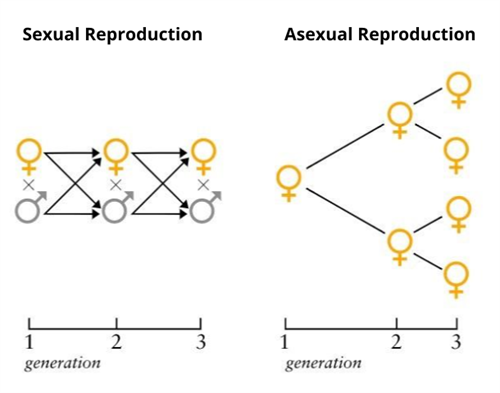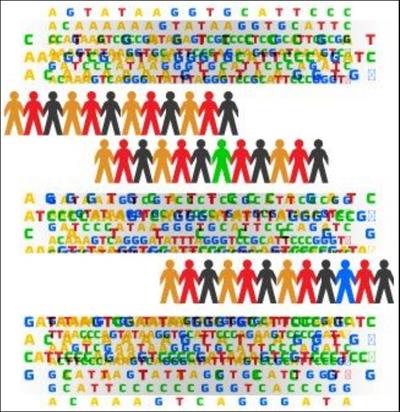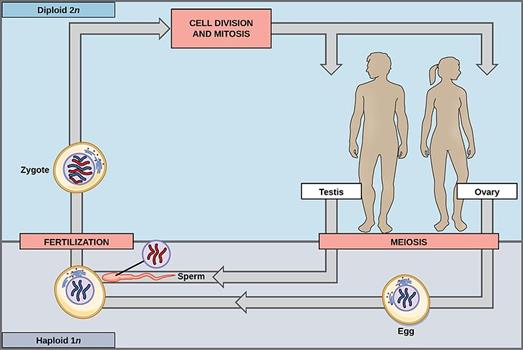
PUMPA - SMART LEARNING
எங்கள் ஆசிரியர்களுடன் 1-ஆன்-1 ஆலோசனை நேரத்தைப் பெறுங்கள். டாப்பர் ஆவதற்கு நாங்கள் பயிற்சி அளிப்போம்
Book Free DemoIn this theory, let's see the advantages of sexual reproduction over asexual reproduction and why sexual reproduction is prevalent.
Advantages of Sexual reproduction over Asexual reproduction:
Sexual reproduction offers several advantages over asexual reproduction, as it involves:

Sexual and asexual reproduction
1. Sexual reproduction involves the fusion of male and female gametes from the male and female organisms. Since the fusing gametes come from two sexually distinct individuals, the offspring have a wide range of characters.
2. During gametogenesis, meiosis provides opportunities for new gene combinations. It plays an important role in the emergence of new species and leads to the variation required for evolution.
Why sexual reproduction?
The forming of two new cells from a single cell involves copying both the DNA and the cellular apparatus. As we have seen, the DNA copying method is not accurate; and the errors that arise are a source of variation in populations of organisms.
Variations cannot protect an individual organism, but they can help ensure the survival of a species in a population. Therefore, it would make sense if organisms develop reproductive mechanisms that allow for more and more variation.
While DNA-copying mechanisms are not perfect, they are accurate enough to make a generation of variation, which is actually a slow process. If the DNA copying mechanisms were less accurate, many of the generated DNA copies will not work with the cellular apparatus and would degenerate.
So, what can be done to speed up the process of creating variants?

Illustration of genetic variations in species
Each new variation is created in a copy of DNA that already contains variations from previous generations. As a result, the patterns of accumulated variations in two different individuals in a population might be substantially different. Because all of these differences occur in living individuals, it is assured that they do not have any bad effects.
Combining variations from two or more individuals would result in new combinations of variants. The sexual mode of reproduction incorporates such a process of combining DNA from two separate individuals.
However, this poses a significant challenge. If each new generation is created by combining the DNA copies of two previously existing individuals, each new generation will have twice the quantity of DNA as the previous generation. This is likely to cause problems with the control of the cellular apparatus by the DNA. How many options do we have for resolving this problem?
We have seen previously that, as organisms become more complex, the specialisation of tissues increases. Many multicellular organisms have discovered a solution by developing specific lineages of cells in specialised organs. These contain half the number of chromosomes and half the quantity of DNA as non-reproductive body cells.
Important!
Meiosis, a type of cell division, is used to accomplish this.

Fusion of haploid gametes to form diploid zygote
As a result, when two individual germ cells fuse during sexual reproduction to generate a new individual, the number of chromosomes and DNA content in the new generation is restored. If the zygote grows and develops into an organism with highly specialised tissues and organs, it must have the energy reserves to do it.
In simple organisms, the two germ-cells are not significantly different from one another or may even be similar. However, as body designs become more sophisticated, germ-cells become more specialised.
One germ-cell is large and contains the food stores, whereas the other is small in size and motile. In the following sections, we will look at the need to produce these two different types of gametes that leads to differences in male and female reproductive systems.
Reference:
https://commons.wikimedia.org/wiki/File:Figure_11_02_01.jpg
https://upload.wikimedia.org/wikipedia/commons/9/96/SexuellAsexuell.svg
https://upload.wikimedia.org/wikipedia/commons/2/2c/Human_genetic_variation.jpg